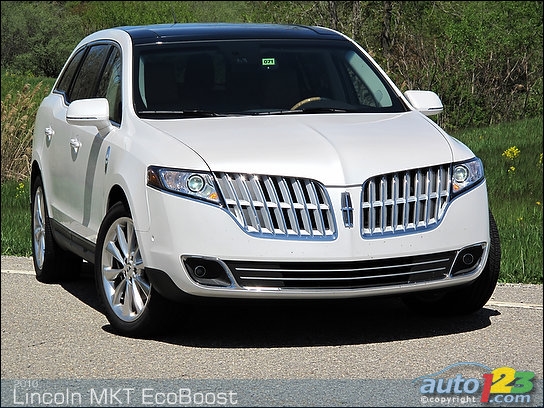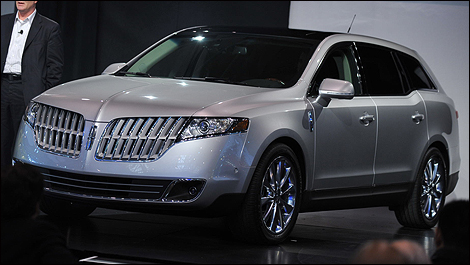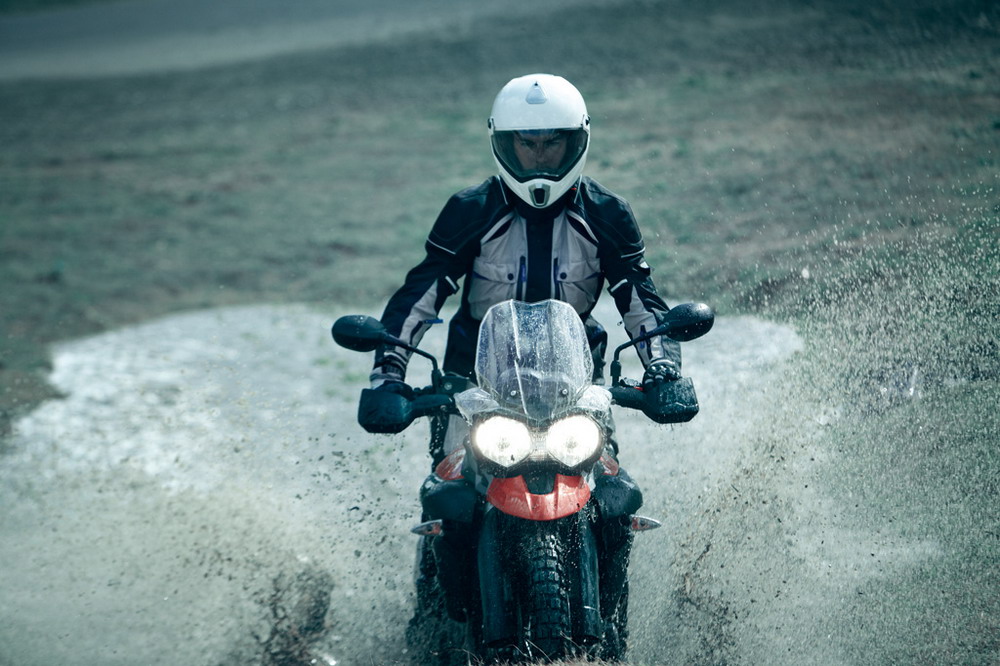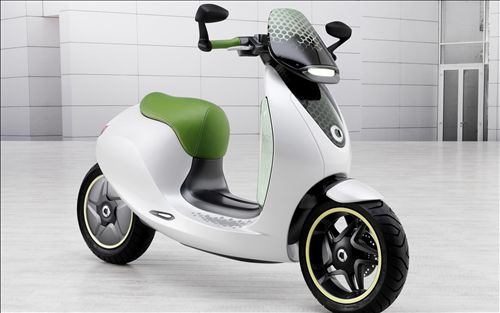Tuesday, November 30, 2010
2010 rossin bertin vorax coupe r pics
Partnership of the early architects as General Motors, Fharys Junior Rossin and Natalino Bertin, Bertin was born ace’s first national sports car, Vorax which will be presented at the Auto Show in Sao Paulo. Rossin brand new Brazilian-Bertin obtain this supercar in two versions: coupe version andconvertible and bequeath to receive a strong BMW V10 570 horsepower engine, gearbox will have seven consecutive velocity and adhesive friction at the rear.His consistency is carbon fiber and aluminum structure, which gave birth to the corner all by 1300 kg bolide that this fair national accelerates from 0 to 100 km / h in just 3.8 seconds and can reach peak speeds of 330 km / h. And Vorax incorporates technology manufacturing and technical specifications for the design of an advanced, full-bodied, hostile and seductive. As if there is something out of a superhero movie car has to absorb and only vaguely located there, in addition to having the engine and ability, a big attraction, and of course the fact that a Brazilian superesportivo unprecedented in terms of visuals that are not owed anything right for examples of spherical better. Suggested retail price of the magnetic machine is $ 700,000.
Monday, November 29, 2010
sedona orange bike pics
The 2011 Harley-Davidson® Dyna® Wide Glide® FXDWG is full of classic chopper motorcycle style. In front is a long and raked out fork with a 21-inch wheel, giving this model quintessential chopper motorcycle style. And in the back, the Harley Wide Glide features a side-mounted license plate for added custom chopper motorcycle style. Want even more factory custom style on your chopper motorcycles? This bike also features an optional classic flame design on the fuel tank. Select the flames on the Harley-Davidson Wide Glide chopper motorcycle for a factory custom look at an affordable Harley price.
2011 Volvo S60 pictures
 2011 Volvo S60 image
2011 Volvo S60 image 2011 Volvo S60 interior pics
2011 Volvo S60 interior pics 2011 Volvo S60 car
2011 Volvo S60 car 2011 Volvo S60 latest
2011 Volvo S60 latest 2011 Volvo S60 image
2011 Volvo S60 imageThe Volvo S60's athletic stance is accentuated by a sculpted bonnet and short overhangs front and rear, plus what Volvo's design team calls the "racetrack" design. The car's lines do not end abruptly but instead continue to flow organically, echoing the smooth shapes of the racetrack.
This sporty appearance can be further enhanced with an exterior styling kit that incorporates front and rear skid plates, two frames in the lower valence, side scuff plates, exhaust tailpipe finishers and 18-inch alloy wheels.
Volvo's designers have also used LED (Light Emitting Diode) technology to create distinctive, signature lights at the front and rear that make the car clearly identifiable as an Volvo S60, even in the dark.
The all-new Volvo S60 is being introduced with a range of exterior colours including two new shades: Vibrant Copper and Electrum Gold.
NEW DYNAMIC CHASSIS
The new Volvo S60 is the most sporting Volvo ever built and during the development process, the chassis team refined every single detail to fine tune the driving experience. The result of their labours is a newly-developed Dynamic chassis, standard on every new Volvo S60.
The steering gear ratio is 10 per cent faster than in previous models to give enhanced steering feel and sharper response. The steering column's thicker tubing and stiffer bushes have increased torsional rigidity by 100 per cent. This also contributes to the increased feeling of direct contact with the wheels and the road.
The front spring struts have thicker pistons compared with the sports chassis in the Volvo S80. The resultant 47 per cent increase of stiffness means that the body structure is better able to absorb lateral loads. The springs themselves are shorter and stiffer than before and the Eigen frequency has increased by 10 per cent. At the front, spring strut mounting stiffness has increased by 50 per cent. The front and rear subframe bushes are up to twice as stiff compared with previous models. The link arm bushings have also been optimised for sporty driving and full control.
The damper mountings at the rear are made of PUR (polyurethane) instead of rubber to provide better balance between comfort and dynamic control.
Stefan Sällqvist, responsible for the Volvo S60 chassis development explained: "We spent many weeks fine-tuning the dampers out in the English countryside. We drove on old Roman roads that have only ever received a few layers of tarmac over the centuries - a perfect environment for finding the right damping qualities."
Advanced Stability Control
The Dynamic Stability and Traction Control (DSTC) in the all-new Volvo S60 has a number of sophisticated features to improve driving pleasure and safety. The Volvo S60 is the first saloon on the market with Volvo's Advanced Stability Control. With a new roll sensor, it's possible to identify any skidding tendency at a very early stage. This means that the anti-skid system can step in earlier and with greater precision. Advanced Stability Control is a great asset in dynamic driving that involves considerable lateral forces.
New Corner Traction Control for smoother curves
The dynamic new chassis is backed up by a range of electronic systems that further sharpen the sporty driving experience. Corner Traction Control is a new feature that uses torque vectoring so the car takes corners more smoothly. This technology is a further refinement of the DSTC system. When taking a curve, the car's inner driven wheel is braked at the same time as more power is transmitted to the outer driven wheel. This allows the driver to take the corner more tightly while reducing any tendency to understeer.
Advanced, integrated braking functions
A highly advanced braking system is an important part of the dynamic driving properties of the all-new Volvo S60. A number of features interact to provide the shortest possible stopping distance in all scenarios. Technology includes:
Ready Alert Brakes can predict when emergency braking is needed. The brake calipers are applied lightly to the brake discs even before the driver presses the brake pedal.
Hydraulic Brake Assist helps the driver brake in the shortest possible distance. In an emergency situation where the driver does not press the brake pedal fast or hard enough, Hydraulic Brake Assist can help utilise the ABS system optimally and thus shorten the overall braking distance.
Optimised Hydraulic Brakes is a system that amplifies braking ability during firm braking by using hydraulics to compensate for low vacuum pressure in the brake servo.
Fading Brake Support uses the hydraulic system to gradually build up brake pressure during long, hard braking. This helps reduce the risk of brake fade and maintains pedal feel.
The all-new S60 is equipped with an Electronic Parking Brake as standard.
FOUR-C as an option
All variants of the new Volvo S60 can be specified with the FOUR-C active chassis, which has been modified and refined for better control and comfort. This is an advanced, self-adjusting chassis system that uses a number of sensors to continuously monitor the car's behaviour. In mere fractions of a second, the dampers are adjusted to suit the current driving situation.
With three alternative chassis settings, all it takes is for the driver to press a button to alter the car's character: Comfort, Sport or Advanced.
ENGINE RANGE
At launch, the Volvo S60 range will be available with a choice of two diesels and one petrol engine. All the engines have been developed to meet the highest demands on sporty, dynamic driving with competitive fuel consumption.
Two five-cylinder turbo diesels
The high-performance twin turbo D5 produces 205 horsepower and 420Nm of torque. Acceleration from 0-62mph takes 7.8 seconds (manual and automatic) and top speed is 146mph (manual) and 143mph (automatic). In the most recent D5 version, introduced in spring 2009, the performance and driveability requirements have been met by fitting two turbochargers of different sizes, one taking over from the other and providing added power within a broader rev range. The result is alert response and rapid acceleration at all speeds, with seamless transfers in the turbo rev range between the two turbochargers. The complementary properties of the two turbos combine high performance with lower fuel consumption of 47.9mpg (EU Combined, preliminary figure).
Advanced fuel injection technology using piezoelectric fuel valves gives exact distribution of fuel in the combustion chamber, with efficient combustion and low emissions as a result.
Smaller displacement lowers fuel consumption
In addition there is the newly-developed 2.0-litre D3 engine producing 163hp and 400Nm of torque. Acceleration from 0-62mph takes 9.2 seconds (manual and automatic) and top speed is 137mph (manual) and 134 mph (automatic).
The new five-cylinder 2.0D is, in principle, the same engine as the present 2.4D, but cylinder capacity has been reduced with a shorter stroke to optimise fuel consumption. With a manual gearbox fuel consumption is now up to 54.3mpg (EU Combined, preliminary figure).
The engine has been optimised to offer reduced fuel consumption and the injection system has a different type of piezoelectrical fuel valve compared with the D5 engine. These valves keep fuel consumption to a minimum thanks to exceptionally fast and precise injection pulses under high pressure. This results in far more efficient combustion.
In order to give the car better driving properties, the turbocharger has been fine-tuned for high torque from low revs.
Both turbodiesels are available with six-speed manual gearbox as standard or an optional six-speed automatic transmission. A maintenance-free particulate filter that traps about 95 percent of the soot particles is fitted as standard in both engines.
High-performance T6 petrol engine
The 3.0-litre T6 petrol engine generates 304 hp and 440 Nm of torque, enhancing acceleration and smooth progress on the road. Acceleration from 0-62 mph takes 6.5 seconds and top speed is 155 mph. Volvo Cars' engine specialists have succeeded in cutting fuel consumption by about 10 per cent to 27.7 mpg (EU Combined, preliminary figure).
The engine's power is delivered to the wheels via Volvo's second-generation six-speed automatic Geartronic transmission. New valves and lower friction mean faster gear changes than before. AWD (All Wheel Drive) is standard on the T6.
DRIVe diesel below 115 g/km
During the first year of production a DRIVe version of the all-new Volvo S60 will be introduced, featuring a new 1.6-litre diesel engine. Fuel consumption will be an impressive 65.7mpg (EU Combined, preliminary figure), corresponding to CO2 emissions approximately below 115 g/km. The uprated engine produces 115 hp and 270 Nm of torque, and will only be available with a six-speed manual gearbox.
Later during the first year of production, the all-new Volvo S60 will also become available with a 2.0 GTDi variant (T5) producing 240 hp and torque of 320 Nm. Furthermore, there will be a 1.6-litre GTDi engine available in two versions: 180 hp (T4) and 150 hp (T3) with torque of 240 Nm.
All the GTDi engines will be available in combination with Volvo's optional automatic six-speed Powershift transmission or a six-speed manual gearbox as standard. The Powershift concept works like two parallel manual gearboxes with separate clutches, giving quick and fuel-saving gearchanges.
PEDESTRIAN DETECTION WITH FULL AUTO BRAKE
The all-new Volvo S60 features the ground breaking Pedestrian Detection with Full Auto Brake system. Pedestrian Detection consists of a newly developed radar unit integrated into the car's grille, a camera fitted in front of the interior rear-view mirror, and a central control unit. The radar's task is to detect any object in front of the car and to determine the distance to it. The camera determines what type of object it is.
The full auto brake part of the technology also responds to vehicles in front that are at a standstill or that are moving in the same direction as the car fitted with the system.
The newly developed dual-mode radar's much wider field of vision ensures that pedestrians about to step into the roadway can be detected early on. The camera has higher resolution than the previous-generation auto brake which makes it possible to detect the pedestrian's pattern of movement.
"The auto-brake system requires that the object is confirmed by both the radar and the camera. Thanks to the advanced sensor technology used, it is now possible to increase to full braking power," explains Thomas Broberg, Senior Safety Advisor at Volvo Cars.
"Detecting pedestrians with sufficiently high reliability has been a complex challenge. Our innovative technology is programmed to trace a pedestrian's pattern of movement and also to calculate whether he or she is likely to step into the road in front of the car. The system can detect pedestrians who are 80 cm tall and upwards, that is to say including children."
Friday, November 26, 2010
Suzuki prediater bike image
 Suzuki prediater photo
Suzuki prediater photo Suzuki prediater picture
Suzuki prediater pictureEver since Suzuki introduced the Hayabusa, it's had only one competitor: Itself. That's why the latest Hayabusa is so impressive - compared to the original, it's hotter than ever. For enthusiasts, that comparison will make your heart pound.
Building on an impeccable pedigree, the Hayabusa features a number of major developments to cement its place at the forefront of sportsbike styling, engineering and performance.
Effortlessly delivering broad, muscular torque, the new Hayabusa is powered by a 1,340cc, DOHC, liquid-cooled, four-cylinder, 16-valve engine, offering 11% greater performance and smoother running than its predecessor.
Features
* Redesigned instrument cluster now features four analog meters for speedometer, tachometer, fuel gauge and water temperature with a new S-DMS mode indicator, gear position indicator and adjustable engine rpm indicator.
* New 1340cc engine, DOHC liquid-cooled engine with 16-valves, Twin Swirl Combustion Chambers provides 11% higher performance and smoother operation.
* New Suzuki SDTV fuel injection system with dual injectors per cylinder and ram air intake with large volume airbox.
* New S-DMS (Suzuki Drive Mode Selector) allows the rider to choose from three different engine settings depending on riding conditions or rider preferences.
* New lightweight titanium intake and exhaust valves with narrow 14 degree valve angle for high combustion chamber efficiency.
 Suzuki prediater image
Suzuki prediater image new Suzuki prediater
new Suzuki prediater Suzuki prediater wallpaper
Suzuki prediater wallpaper2010 Lincoln MKT pictures
 2010 Lincoln MKT image
2010 Lincoln MKT image 2010 Lincoln MKT photo
2010 Lincoln MKT photo 2010 Lincoln MKT image
2010 Lincoln MKT image new 2010 Lincoln MKT
new 2010 Lincoln MKT 2010 Lincoln MKT photo
2010 Lincoln MKT photoA host of new features will be available on the Taurus, including keyless entry and start, adaptive cruise control, blind-spot monitoring, rain-sensing wipers, SYNC, navigation and massaging front seats. Ford's new MyKey restricted driving mode system will also find its way into the sedan.
Underhood, the 3.5-litre V6 remains on duty, developing 263 horsepower and 249 lb-ft of torque. Front-wheel and all-wheel drivetrains will be available, and high-end models get a 6-speed automatic with manual mode and wheel-mounted paddle shifters. Ford announced that its new 355-hp EcoBoost V6 engine will also be offered in the new Taurus at a later date than the car's summer intro.
The Lincoln MKT is based on the Ford Flex crossover, which means it offers three-row seating. Powered by the MKS sedan's 3.7-litre V6, which develops 268 horses and 267 lb-ft of torque, the MKT will also benefit from the 355-hp, 3.5-litre EcoBoost engine for extra go. All-wheel drive is optional with the base engine and standard with the EcoBoost mill.
Luxury features available in the MKT include Active Park Assist, adaptive cruise control, xenon headlights, the aforementioned MyKey, SYNC and navigation with THX II 5.1 sound system and 14 speakers. Look for the MKT in late summer
Thursday, November 25, 2010
triumph tiger 800 photos
 triumph tiger 800 picture
triumph tiger 800 picture triumph tiger 800 image
triumph tiger 800 image new triumph tiger 800
new triumph tiger 800 triumph tiger 800 bike
triumph tiger 800 bike
triumph tiger 800 wallpaper
Triumph's hopeful ace in the hole will be its trademark triple engine, measuring 800cc in this case. According to leaked documentation, this mill is a stroked version of the much-loved 675cc inline-three used in Triumph's small-bore sport bikes. Figure around 100 horsepower and a nice, flat torque curve peaking at about 70 pound-feet.
With an expected weight in the 440-pound range, the Tiger's power-to-weight ratio should crucially be just a bit better than the aforementioned Beemer. Check out our high-res image gallery below.
2011 nissan sentra pictures
 2011 nissan sentra image
2011 nissan sentra image 2011 nissan sentra photo
2011 nissan sentra photo 2011 nissan sentra car
2011 nissan sentra carNissan Sentra continues its reputation for building high-value compact car space and comfort, sensitive, fun to drive performance and versatility. Sentra is available in 2.0, 2.0 S, 2.0 SR (with an outdoor sports and has an interior style), and 2.0 SL models, each with a strong standard 140 horsepower 2.0 engine liter four-cylinder can be equipped with a 6-speed manual transmission (2.0) or more fuel-efficient Nissan Xtronic CVT (2.0, 2.0 S, 2.0 SL and 2.0 SR). The transfer of the coupling is weighted well and little by little in their startup phase, wheel and instrument panel was moved so easily pass without pulling the driver sporting seat near the body.
 2011 nissan sentra image
2011 nissan sentra image new 2011 nissan sentra
new 2011 nissan sentraMonday, November 22, 2010
honda pcx 125cc photos
 honda pcx 125cc image
honda pcx 125cc image honda pcx 125cc pics
honda pcx 125cc pics honda pcx 125cc picture
honda pcx 125cc picture honda pcx 125cc scooter in black
honda pcx 125cc scooter in black new honda pcx 125cc
new honda pcx 125ccHonda will be introducing a new scooter archetypal for the ASEAN and all-around exchange soon, alpha with Thailand breadth it will be produced. The new Honda PCX is powered by a 4-stroke water-cooled 125cc audible base abettor that can do 50km per liter on the ECE 40 MODE cycle. It’s not action to be cheap, as the PCX will be positioned as a high-end but high-value model. The Honda PCX actualization an “idling stop system” breadth the abettor can shut off automatically aback the scooter comes to a complete stop. This can admonition save armament afire while you adjournment for a cartage afire or for whatever accuracy you’re brimming – cartage jams don’t accept to affectation that abounding of a affliction for these bikes.
2010 GMC Terrain pictures
 2010 GMC Terrain image
2010 GMC Terrain image 2010 GMC Terrain
2010 GMC Terrain 2010 GMC Terrain photo
2010 GMC Terrain photo 2010 GMC Terrain car
2010 GMC Terrain car
2010 GMC Terrain pics
Don’t get me wrong– the car is an excellent drive and a very nice place to be in. But first impressions are key and when big square wheel wells are coupled with a huge chintzy chrome grill, some may not know that beauty isn’t just skin deep.
Stepping into the Terrain changes all of this, however. The dash and center console are clean, focused and well laid out, the seats (including the back row) are comfy with extra points going to GMC for perfecting lumbar support, and the amount of space inside is surprisingly more than expected. Technical goodies like rear view cameras and USB ports are standard on all trims. GMC has even included a height adjustable rear tail gate, a feature handy for not putting holes in your garage ceiling and impressing girls at the mall (I’d assume).
On the road, the Terrain is a great drive. Just like a good pair of running shoes, it simply blends in with the moment– you forget about what you’re driving and just concentrate on the driving. Steering was sharp and responsive, with adequate power coming from the direct injected V6. Most notable, however, was the lack of road noise even on wet and snowy pavement.
So it drives good, the interior is superbly executed, and with a base price of $24,250 the Terrain isn’t bad value for money.
But what about those looks?
Because I am very picky on what cars I do and do not like to look at, I arranged a test to see what the general public thinks of the Terrain’s styling and see if maybe I had been too harsh, too quick. Holding a large profile picture of the vehicle (which I printed straight from GMC’s website), I took a trip down to the local grocery store, chose ten random women, and asked them one simple question: “Would you date a man who drove this?”
After several minutes and several quizzical looks, the results were in. Of the ten women asked, nine said they would date a man who drove a Terrain– landslide victory for GMC!
So what do we take away from this whole experience then? The next time you see a GMC Terrain just remember its three key points: a great drive, a great interior, and a design that will get you women at grocery stores.
Sunday, November 14, 2010
2010 Smart eScooter Concept pics
 2010 Smart eScooter Concept
2010 Smart eScooter Concept 2010 Smart eScooter back view
2010 Smart eScooter back view 2010 Smart eScooter Concept photo
2010 Smart eScooter Concept photo 2010 Smart eScooter Concept picture
2010 Smart eScooter Concept picture 2010 Smart eScooter Concept
2010 Smart eScooter Concept"The Escooter shows what an integrated, open approach we have to the subject of urban mobility," says Smart chief Dr. Annette Winkler in a prepared statement. "[It offers] even more driving fun in the city, even more adaptability to the respective living environment, even more flexibility -- not least because it offers the possibility to be integrated in our car2go concept."
Apart from the Smart emblems, the Escooter bears little resemblance to the ForTwo we've come to know over the past few decades. The two-wheeler has a sharp, angular presence up front, which segues into a curvaceous rump, marked by a large, Jell-O mold-like taillamp. The only visual connection to Smart's four-wheeled offerings are the body panels. In theory, they can quickly be interchanged, allowing owners to personalize the Escooter at a moment's notice. All lighting, including the headlamp, turn signals, marker lamps, and taillamp, is provided by LEDs.
Smart Escooter Concept Front Three Quarters.JPG
Click to view Gallery
Beneath the skin lies a frame constructed from both steel and aluminum that supports single swingarm suspension for both the front and rear wheels. Since space is at a premium, the Escooter makes use of a 4-kW (5.4-horsepower) brushless electric motor mounted within the rear hub. That provides enough room for both the 48-volt lithium ion battery pack, which offers roughly 62 miles of range, and its on-board charger. Although solar cells mounted in the nose and windscreen can help recharge the battery pack, the Escooter can be recharged in 3-5 hours by plugging it into what Smart calls "household current," which likely translates into anything between 120- to 240-volt power.
The Escooter's technology, however, extends far beyond the battery. Smart fitted the concept with a linked front and rear braking system (one lever applies both brakes) with ABS, an airbag, and -- an important for inexperienced cyclists -- blind-spot detection. All instrumentation is provided by an iPhone mounted within the handlebars, which also serves as both the navigation system and the ignition key itself. A fold-out seat quickly transforms the Escooter into a two-passenger vehicle; deploying the extra saddle also triggers a pair of footposts to unfold from the body.
Smart has yet to declare the Escooter ready for production, but buzz within Daimler suggests the brand is seriously studying consumer reaction to the idea. If it flies, expect a production-ready version to hit (European) streets in the next few years.
Smart Escooter Concept Rear Three Quarters.JPG
Smart Escooter Concept Rear.JPG
Smart Escooter Concept Front.JPG
Subscribe to:
Posts (Atom)








